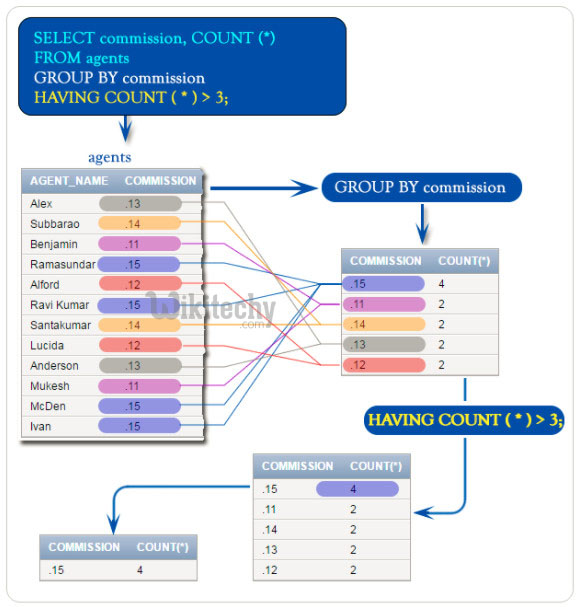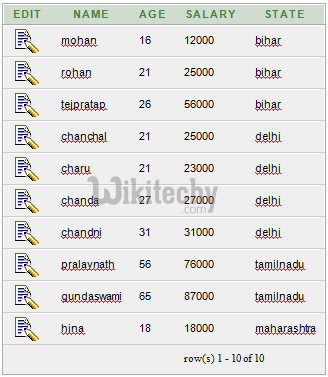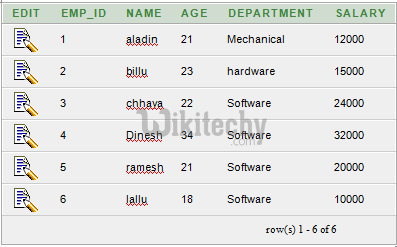Oracle Having | Oracle Having Clause - oracle tutorial - sql tutorial
What is Oracle HAVING Clause ?
- In Oracle, HAVING Clause is used with GROUP BY Clause to restrict the groups of returned rows where condition is TRUE.
- The HAVING clause is applied to each group of the grouped table, much as a WHERE clause is applied to a select list.
- If there is no GROUP BY clause, the HAVING clause is applied to the entire result as a single group.
- The SELECT clause cannot refer directly to any column that does not have a GROUP BY clause.

Oracle group by - having clause
oracle tutorial , sql tutorial , sql , pl sql tutorial , oracle , pl sql , plsql
Syntax:
SELECT expression1, expression2, ... expression_n,
aggregate_function (aggregate_expression)
FROM tables
WHERE conditions
GROUP BY expression1, expression2, ... expression_n
HAVING having_condition;
click below button to copy the code. By - oracle tutorial - team
Parameters:
- expression1, expression2, ... expression_n: It specifies the expressions that are not encapsulated within aggregate function. These expressions must be included in GROUP BY clause.
- aggregate_function: It specifies the aggregate functions i.e. SUM, COUNT, MIN, MAX or AVG functions.
- aggregate_expression: It specifies the column or expression on that the aggregate function is based on.
- tables: It specifies the table from where you want to retrieve records.
- conditions: It specifies the conditions that must be fulfilled for the record to be selected.
- having_conditions: It specifies the conditions that are applied only to the aggregated results to restrict the groups of returned rows.
Oracle HAVING Example: (with GROUP BY SUM function)
- Let's take a table "Wikitechy_Salesdepartment"
Wikitechy_Salesdepartment table:
CREATE TABLE "Wikitechy_Salesdepartment"
( "ITEM" VARCHAR2(4000),
"SALE" NUMBER,
"BILLING_ADDRESS" VARCHAR2(4000)
)
click below button to copy the code. By - oracle tutorial - team

Execute this query:
SELECT item, SUM(sale) AS "Total sales"
FROM Wikitechy_Salesdepartment
GROUP BY item
HAVING SUM(sale) < 1000;
click below button to copy the code. By - oracle tutorial - team

Oracle HAVING Example: (with GROUP BY COUNT function)
- Let's take a table "wikitechy_customers"
Wikitechy_Customer table:
CREATE TABLE "WIKITECHY_CUSTOMERS"
( "NAME" VARCHAR2(4000),
"AGE" NUMBER,
"SALARY" NUMBER,
"STATE" VARCHAR2(4000)
)
/
click below button to copy the code. By - oracle tutorial - team

Execute this query:
SELECT state, COUNT(*) AS "Number of customers"
FROM wikitechy_customers
WHERE salary > 10000
GROUP BY state
HAVING COUNT(*) >= 2;
click below button to copy the code. By - oracle tutorial - team

Oracle HAVING Example: (with GROUP BY MIN function)
- Let's take a table "wikitechy_employees"
Employees table:
CREATE TABLE "WIKITECHY_EMPLOYEES"
( "EMP_ID" NUMBER,
"NAME" VARCHAR2(4000),
"AGE" NUMBER,
"DEPARTMENT" VARCHAR2(4000),
"SALARY" NUMBER
)
/
click below button to copy the code. By - oracle tutorial - team

Execute this query:
SELECT department,
MIN(salary) AS "Lowest salary"
FROM wikitechy_employees
GROUP BY department
HAVING MIN(salary) < 15000;
click below button to copy the code. By - oracle tutorial - team

Execute this query:
SELECT department,
MAX(salary) AS "Highest salary"
FROM wikitechy_employees
GROUP BY department
HAVING MAX(salary) > 30000;
click below button to copy the code. By - oracle tutorial - team
Oracle HAVING Example: (with GROUP BY MAX function)

